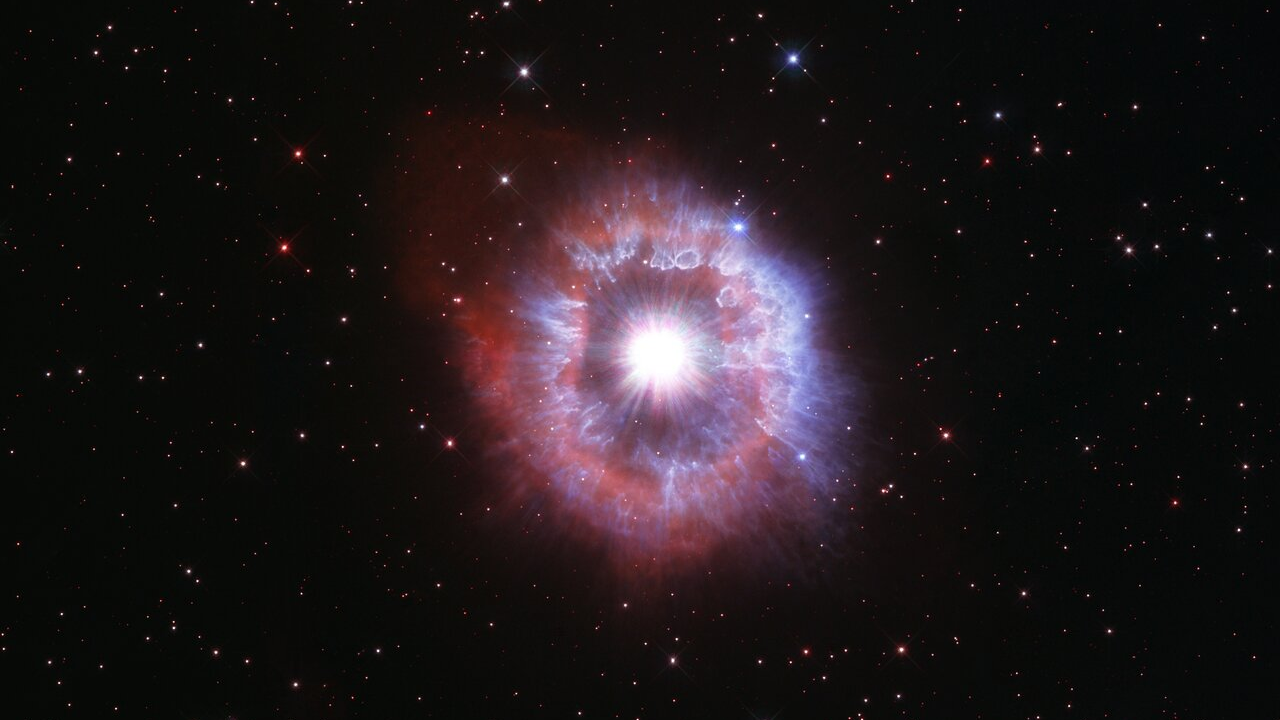Science
NASA’s Hubble Telescope Reveals Stunning Images of Stars

NASA’s Hubble Space Telescope has unveiled a selection of breathtaking images showcasing some of the most beautiful star formations in our universe. These stunning photographs reveal intricate details of star clusters and dynamic cosmic environments, offering a glimpse into the processes that shape the stars around us.
A Closer Look at Stellar Wonders
One of the most captivating images features the region known as N11 in the Large Magellanic Cloud, a nearby galaxy. This vibrant area is bustling with young stars and gas clouds, illustrating the vigorous process of star formation. The image was created using five different observations from the Hubble Telescope, highlighting the complexity and beauty of our cosmic neighborhood. The photograph was produced with contributions from NASA, the European Space Agency (ESA), and Jesús Maíz Apellániz from the Instituto de Astrofísica de Andalucía, Spain.
Another remarkable image celebrates the 31st anniversary of the Hubble Space Telescope by capturing the bright star AG Carinae. This giant star is in a constant struggle to maintain stability, balancing the forces of gravity against its own intense radiation. Surrounding AG Carinae is a vast cloud of gas and dust, measuring approximately five light-years across, further emphasizing the dynamic environment in which this star exists.
The image of two massive stars, WR 25 and Tr16-244, within the star group known as Trumpler 16, provides a stunning view of the Carina Nebula. Located around 7,500 light-years away, WR 25 stands out as the brightest star in the image, showcasing the striking contrast between its luminosity and the surrounding cosmic landscape.
Insights into Stellar Formation
Highlighting the chaotic beauty of a stellar nursery, another image depicts two light blue gas clouds known as HH 1 and HH 2. These clouds are enveloped by fainter, colorful formations against a dark backdrop. A bright orange star near HH 1 is accompanied by a slender jet of gas, illustrating the energetic processes at play in star formation.
The cluster known as Pismis 24 resides at the center of a large gas cloud called NGC 6357, situated in the Scorpius constellation. This cluster is composed of bright young stars emitting powerful ultraviolet light, which heats the surrounding gas and creates a striking bubble effect. Dense gas clouds obscure the view, making the phenomena within even more intriguing.
Another image reveals a dense cluster of bright stars, with a core of blue stars prominently displayed on the left. Warmer-colored stars surround the core, creating a mesmerizing visual of stellar density. Some larger stars can also be seen in the foreground, further enhancing the complexity of this stellar environment.
The phenomenon of blue straggler stars is depicted in yet another captivating image. These stars are heavier and brighter than their counterparts in a cluster and gradually migrate toward the center over time. The image illustrates the process by which these stars move, providing valuable insight into stellar evolution.
Through these stunning images, NASA’s Hubble Space Telescope continues to inspire awe and wonder about the universe we inhabit. Each photograph not only serves as a work of art but also as a window into the ongoing processes that shape the cosmos, compelling us to further explore and understand the vast expanse of space.
-

 World5 months ago
World5 months agoSBI Announces QIP Floor Price at ₹811.05 Per Share
-

 Lifestyle5 months ago
Lifestyle5 months agoCept Unveils ₹3.1 Crore Urban Mobility Plan for Sustainable Growth
-

 Science4 months ago
Science4 months agoNew Blood Group Discovered in South Indian Woman at Rotary Centre
-

 World5 months ago
World5 months agoTorrential Rains Cause Flash Flooding in New York and New Jersey
-

 Top Stories5 months ago
Top Stories5 months agoKonkani Cultural Organisation to Host Pearl Jubilee in Abu Dhabi
-

 Sports4 months ago
Sports4 months agoBroad Advocates for Bowling Change Ahead of Final Test Against India
-

 Science5 months ago
Science5 months agoNothing Headphone 1 Review: A Bold Contender in Audio Design
-

 Top Stories5 months ago
Top Stories5 months agoAir India Crash Investigation Highlights Boeing Fuel Switch Concerns
-

 Business5 months ago
Business5 months agoIndian Stock Market Rebounds: Sensex and Nifty Rise After Four-Day Decline
-

 Sports4 months ago
Sports4 months agoCristian Totti Retires at 19: Pressure of Fame Takes Toll
-

 Politics5 months ago
Politics5 months agoAbandoned Doberman Finds New Home After Journey to Prague
-

 Top Stories5 months ago
Top Stories5 months agoPatna Bank Manager Abhishek Varun Found Dead in Well









